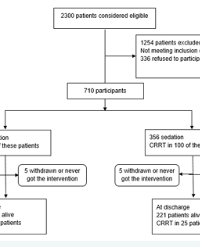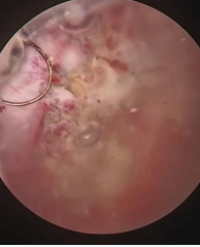
The Effect of Non-Sedation Compared to Sedation on Renal Function in Mechanically Ventilated Critically Ill Patients. A Substudy of the NONSEDA Trial
Background: Acute kidney injury is associated with increased morbidity and mortality. In the NONSEDA trial 700 mechanically ventilated patients were randomized to non-sedation or light sedation with a wake-up trial. The purpose of this post hoc sub-study is to present the effect of non-sedation on renal function, especially the need for renal replacement therapy (RRT)
Methods: The primary endpoint was mortality at 90 days. The secondary endpoints were thromboembolic events, coma or delirium free days, ventilator free days and acute kidney injury. Every day Risk, Injury, Failure, Loss of kidney function, Endstage kidney disease (RIFLE) and the need for CRRT were registered. In addition fluid balance, weight, mean arterial and systolic blood pressure and noradrenaline infusion were registered.
Results: The percentage of patients treated with continuous renal replacement therapy (CRRT) was 28% in the non-sedated compared to 40% in the sedated group (p=0.04). Need for CRRT at discharge was 5% in the non-sedated compared to 11% in the sedated group (p=0.02). The number of days in the RIFLE category renal failure was 1365 in the non-sedated compared to 1678 in the sedated group (p=0.01). In the sedated group, the mean blood pressure was 79.8 mmHg compared to 81.8 in the non-sedated group (p=0.05). Days with noradrenaline was 4.2 in the sedated compared to 3.7 in the non-sedated group (p=0.01). There was no difference in fluid balance.
Conclusion: The kidney function might be better preserved in the non-sedation group compared to light sedation with a wake-up trial. Clinicaltrials.gov (NCT01967680)2013-10-18.
Palle Toft1,2*

